Table of Contents:
Powdery mildew (also called powdery mildew) and downy mildew on grapes are the bane of many winegrowers. In this article, I'll explain, recognize, prevent, and combat these fungal diseases. I hope that after reading this article, you'll have the strategies and tools you need to keep your vineyard free from a high level of (downy) mildew.
Harvesting healthy, ripe, and intact grapes in the fall is crucial for making a beautiful, flavorful wine. Unhealthy, damaged, and unripe grapes are a nightmare to vinify. With the information, tips, and my prevention plan in this article, you should be able to control powdery mildew. I wish you the best of luck.
What is (downy) mildew?
Powdery mildew is a common fungal disease that can affect not only grapes but also numerous other plants. In vineyards, we distinguish between two types: powdery mildew and downy mildew. Powdery mildew is caused by the fungus Uncinula necator and is known for the white, powdery coating that forms on leaves and stems. Downy mildew, on the other hand, is caused by Plasmopara viticola and manifests differently.
Both fungi can cause significant damage to plants, especially if not identified and treated promptly. It's therefore important to know which fungus you're dealing with so you can choose the right treatment and minimize the impact on your grapes and the final flavor of your wine.
They're both fungi, that's clear. But they look different and grow in different conditions.
The main difference between powdery mildew and downy mildew is that powdery mildew looks like spilled powder on the leaves, while downy mildew causes leaves to droop and develop yellow and brown oily spots. Furthermore, powdery mildew spores appear on both sides of the leaves. But downy mildew spores are only on the underside of the leaf. Furthermore, powdery mildew produces a thick web of white spores that cover the leaves, stems, and shoots, while downy mildew spores appear as a gray or white, fluffy layer on the underside of the leaves.
In short, powdery mildew ( Uncinula necator ) and downy mildew ( Peronospora viticola ) are two types of fungal infections in plants. Generally, powdery mildew is an ascomycete fungus (family of sac fungi), while downy mildew is an oomycete fungus (a water mold). Both fungi feed on plant tissue, leading to wilting and death of parts of the plant. Therefore, they are two different types of fungi that require a plan of action in the vineyard. In my prevention plan, I combat both fungal diseases year-round.
Powdery Mildew – When Does the Fungus Occur?
Every year, powdery mildew strikes our vineyards, but also cucumbers, lettuce, zucchini, nut trees, and dozens of other crops. The fungus overwinters in the vineyard in the old wood. You can tell by the yellow or black spots on the wood from the previous year. Therefore, in the autumn, after the harvest, a fungicide treatment is recommended in the vineyard (my recommendations can be found later in this article). You gain one point in your battle against the fungus before the next season begins, but the battle is far from over.







Powdery mildew thrives in warm, dry conditions. Despite the word "dew" in the name, the fungus thrives in dry conditions. This allows it to spread throughout your vineyard. Once it gets humid, the white, powdery coating appears on your leaves and berries. Between 15 and 27 degrees Celsius, the pest thrives. The white cast on your leaves prevents photosynthesis, and the white cast on your berries damages their cell structure, with all the consequences this entails when ripening. Berries can burst open, attract wasps, and harbor unwanted bacteria.

Downy Mildew - The First Symptoms
Downy mildew – when does the fungus occur?
Downy mildew is caused by the fungus Plasmopara viticola. It's an unfortunately common and destructive disease in vineyards. Downy mildew appears in your vineyard under certain environmental conditions. Heat, high humidity, heavy rain, or a combination of these are prime triggers for downy mildew. The disease is most prevalent in spring and early summer, when conditions are ideal for this fungus. The disease produces spores that are spread by wind and rain. These spores can infect the leaves, shoots, and clusters of our beloved grapes.

How can you recognize Downy Mildew?
Now what are the symptoms of mildiou or downey mildew:
- Leaf spots: The first signs often appear as small, yellow or light green spots on the upper side of the leaves. They look a bit like oil stains.
- Leaf underside: If you turn the leaf over and look at the underside, you'll see a white to light purple mold fluff. This fluff contains fungal spores.
- Leaf deformity: As the infection progresses, leaves may become distorted and curl. They may also turn yellow and drop prematurely.
- Bunches: The fungus can also affect bunches. Brown spots and fuzz can appear, and the grapes themselves can become deformed.
- Young shoots: New shoots, often the new axillary shoots, and young leaves can also be susceptible to infection. They exhibit similar symptoms, including spots, fluff, and deformities.

Downy mildew on the bottom of the leaf

Downy mildew also causes fluff on the berries

After the fluff, the berries dry out due to downy mildew
Symptoms can vary depending on the grape variety, the severity of the infection, and environmental conditions. It's important to regularly inspect the vineyard and take appropriate measures at the first signs of downy mildew, such as applying fungicides and implementing cultural measures to limit the spread of the fungus.
General strategies against mildew (both downy and powdery mildew)
There are several strategies in the vineyard, but especially before you plant a vineyard, that can help you combat powdery mildew. Here are a few:
The location of your vineyard
Choose a plot with good airflow or air circulation. Urban areas are often warmer and less windy than rural areas. A vineyard also needs good drainage. Waterlogged areas where water often stagnates after rainfall (which is common in winter) are less suitable for viticulture. All the moisture from the waterlogged soil evaporates in sunny weather, creating ideal conditions for downy mildew.
Sloping plots usually have good water management for grapes. If your plot slopes northward, rising southward, you're getting pretty close to a perfect plot. Of course, a soil analysis should determine whether your soil is immediately suitable, needs adjustment, or is completely unsuitable.

Choose mold-resistant varieties or PIWIs
There are proponents and opponents of varieties that aren't 100% Vitis vinifera (wine grapes). I remain neutral. I recognize the fungal resistance of PIWIs for the simple reason that in my vineyard, there are two varieties that are 100% Vitis vinifera (Chardonnay and Pinot Noir) and two varieties that are crosses with other vitis families (Johanniter and Regent). My Chardonnay and Pinot Noir suffer from fungal diseases every year, but my resistant varieties don't.
I hope it stays that way; I'm confident. It might be wishful thinking, but given that resistance to powdery mildew is genetically determined, I don't expect a change in DNA anytime soon. Will the fungi adapt? They might. But the Concorde grape (Vitis labrusca), very well-known in North America, has always been resistant to powdery mildew and will remain so. The powdery mildew fungus mutates in America as well, but the Concorde grape (Vitis labrusca) remains powdery mildew-free. Granted, the wine from the Concorde grape is undrinkable, but that grape isn't grown commercially for wine in Europe either, so a possible exception isn't ruled out.
edit 2024: In the meantime, I've moved and have a new vineyard with predominantly PIWI varieties:
- 60 Chardonnay
- 70 Divico
- 35 Prior
- 48 Pinotin
- 32 Cabernet Cortis
- 60 Souvignier Gris
- 22 Muscat Bleu
- 6 Monarch
Not all Piwis are equally resistant
PIWIs are therefore usually crosses of Vitis vinifera, Vitis labrusca, Vitis amurensis, Vitis riparia, Vitis rupestris , and so on. Especially clones with Vitis labrusca (e.g., Pinotin) are more resistant (though not 100% resistant) than clones with, for example, Vitis amurensis (e.g., Rondo). So choose your grape varieties wisely. Not all Vitis vinifera varieties are highly susceptible to mold, and not all PIWIs are resistant. I'm happy to help you with your choice via the contact form on this site .


Here you see a completely defoliated bunch zone during the harvest
Pruning and selecting to keep your vineyard airy
Grapevines are "growing." Not pruning is not an option. It starts in winter, when we do the soft pruning. I personally use the Guyot simple method, combined with the Simonit & Sirch method. Don't worry if you hear thunder in Cologne right now. I'll explain it later.
After the gentle pruning, we select the new shoots in spring (late April/early May). Buds where two shoots emerge from the fruiting pod are targeted. The weakest shoot is removed. This not only improves the airiness of your foliage wall but also reduces fruit production. Excess fruit is more difficult to ripen, especially if the weather is unfavorable.
At the end of June, when the shoots reach the top of the highest wire (at 2 meters for me, but with PIWIs it can be lower, down to 1.5 meters), it's best to top off the shoots. Also, make sure to prune (shorten) any branches that extend 40-50 cm beyond the row.
A final step I take is to completely or partially defoliate the bunch zone on the (north)east side of the vineyard before flowering. This allows air to circulate through the bunch zone and allows everything to dry out properly in the morning or after a rain shower. When the grapes ripen in August/September/October, you can also defoliate the (south)west side, but this is mainly to optimally ripen the fruit. Note that you should only defoliate the (south)west side after the risk of heat waves has passed. Sunburn can be detrimental to a healthy harvest.
Keep a close eye on your vineyard and the weather forecast
From April until the last grape leaves my vineyard, I constantly have my two antennas on my head. I'm checking my vineyard's condition and the weather forecast for the coming period. There are weather stations connected to services that warn you about powdery mildew and downy mildew. But with my budget and the size of my vineyard, that's not feasible. I do have an affordable weather station that provides me with valuable information about my vineyard. It tells me how much precipitation has fallen, the general humidity, the temperatures, and the wind speed. I'll explain later why I monitor these parameters.
In your fight against fungi, it's important to monitor your plants. I look at the leaves and the bunches, if any are already present. Check the tops for white powdery mildew. Oil stains on the leaves and/or white fluff on the underside of the leaves indicate downy mildew. Some symptoms (harmless sucking traces of insects) can make you wonder if your vineyard is under attack. If you're unsure or want to preventatively check for spores on your leaves, you can perform a simple test.
- Place a few leaves in a transparent bag (freezer bag)
- Place this bag at room temperature in a dark place (in a cupboard in the living room, for example).
- Wait three days and then look at the leaves. If you don't have any symptoms of powdery mildew, you're most likely safe.
You can use a fungicide in your vineyard
You'll notice this option isn't listed first. Try to follow the previous tips carefully, as fungicides are beneficial for the wild yeasts and yeast nutrients present on your grape skins.
At critical points, you should apply a fungicide. Raw milk (4 to 8% solution in water), soybean infusion, spray sulfur , copper , Luna Experience (Bayer), etc. are some examples. They are all effective against fungi, some more powerful than others. It's important to distinguish between contact fungicides and systemic fungicides. In any case, follow the manufacturer's instructions for use.
Contact fungicides are just as they say. They work in contact with the leaves of your vine and are even most effective when sprayed at the base of the leaf. Therefore, it's important to thoroughly reach all the leaves with your fungicide. These contact fungicides are less effective, but are readily available and can be used frequently. They also work well preventatively. However, they are usually not suitable for curative treatment. The waiting period between treatment and processing and/or consumption of the fruit is relatively short. Examples of contact fungicides are sulfur and copper.
Systemic agents are products that are usually absorbed by the plant through the leaves and transported throughout the plant via the sap streams, where they take effect. Systemic agents are usually synthetic, chemical in nature and are produced by Bayer, BASF, and others, to name just two well-known companies. These agents are highly effective but must be applied precisely to avoid posing a risk to the winemaker and the person consuming the final wine. Some products also have a healing effect when the fungal infection is not yet too advanced. Systemic agents often have a longer shelf life because they remain in the plant longer.



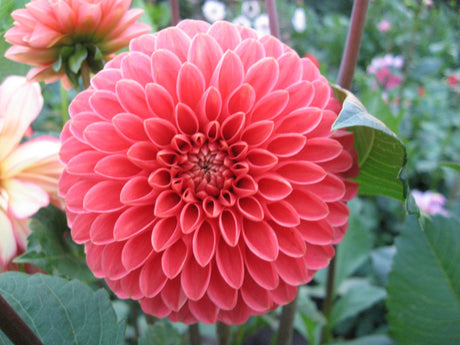
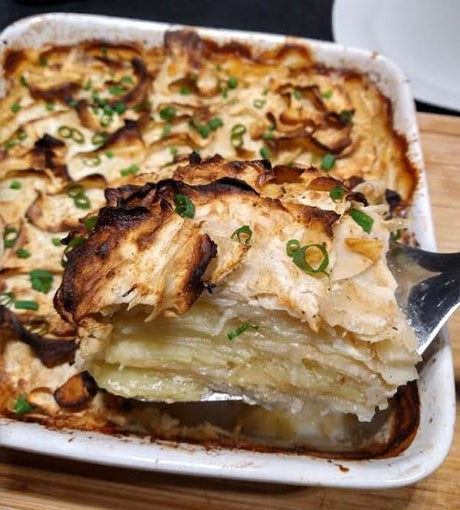
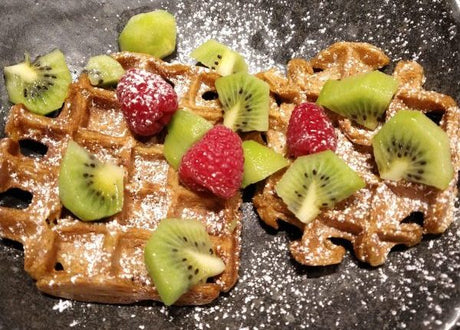
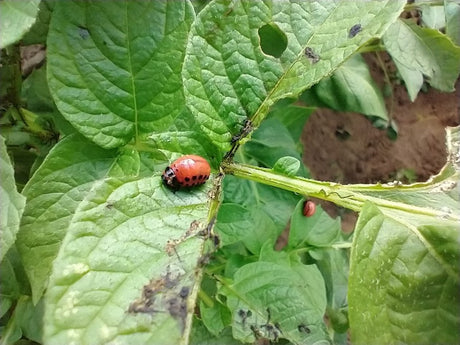


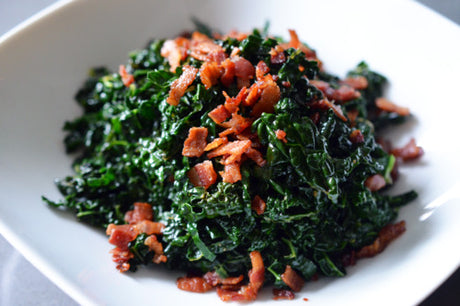
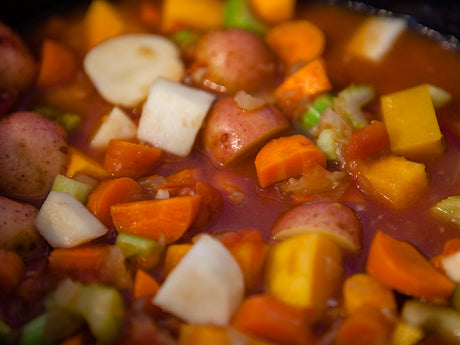
2 comments
Zeer duidelijke en leerlijke uitleg, dank u wel
Vraagje
Als er witte pukkeltjes onderaan het blad verschijnen ( dus geen pluis onderaan blad)en op de bovenkant vh blad zie je bubbelpuntje, heeft dit ook met schimmel te maken of gebrek in de bodem ? Dank vr uw reactie
Eindelijk eens een goede uitleg inclusief bestrijdingsmethoden